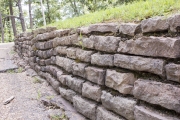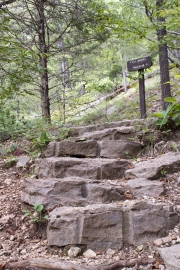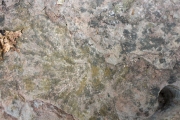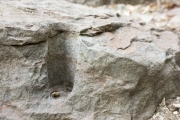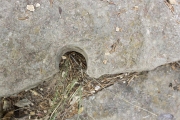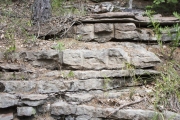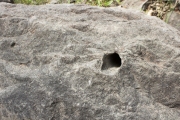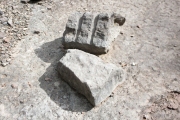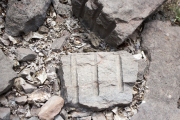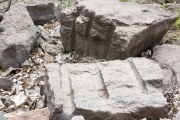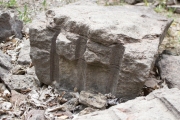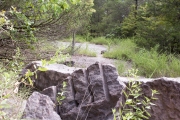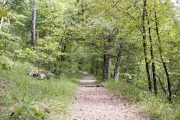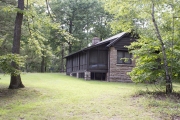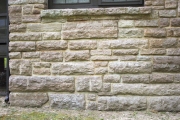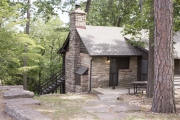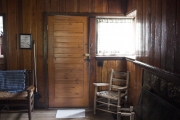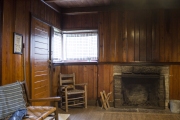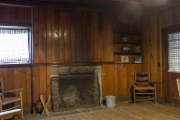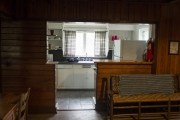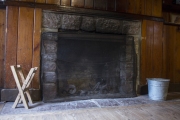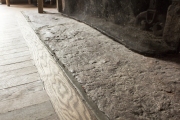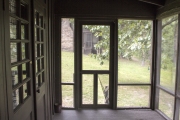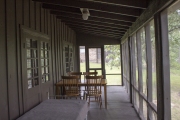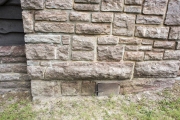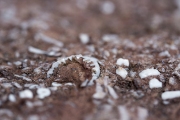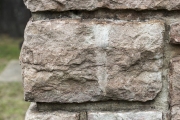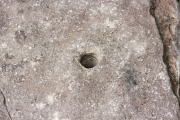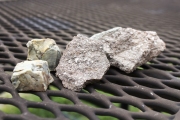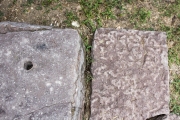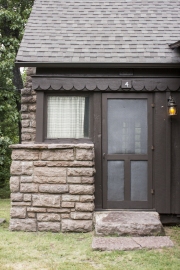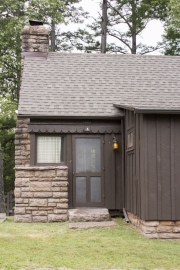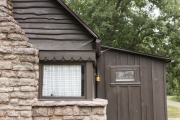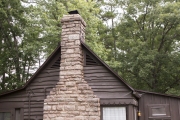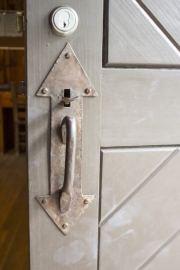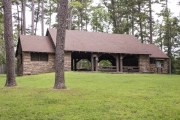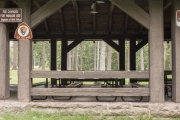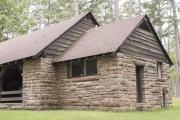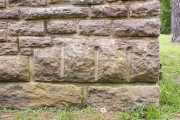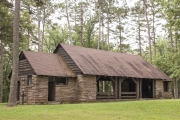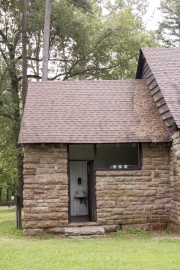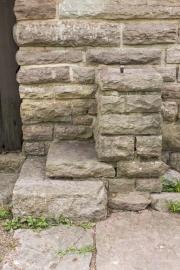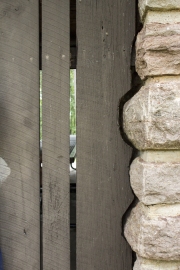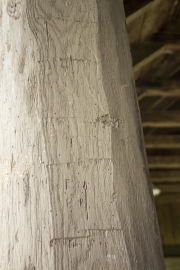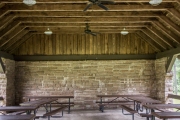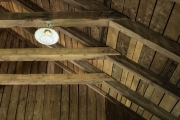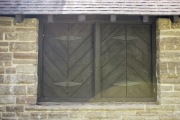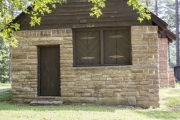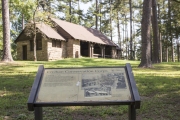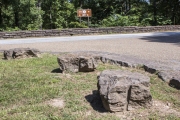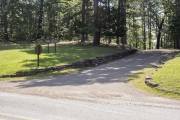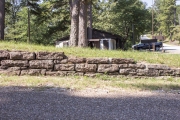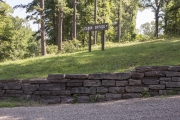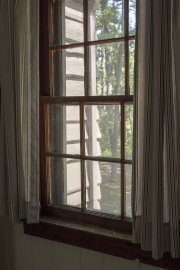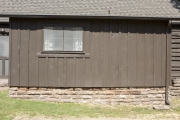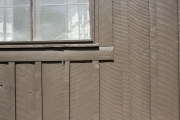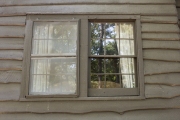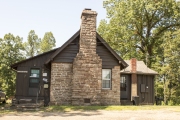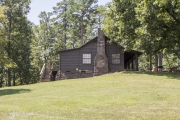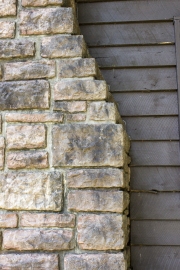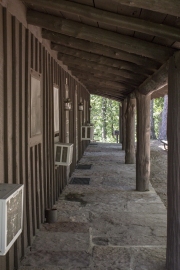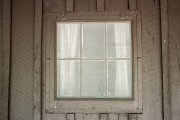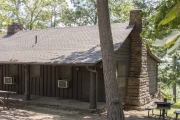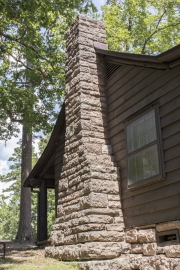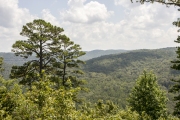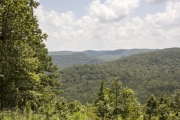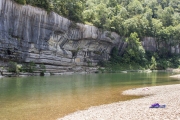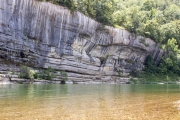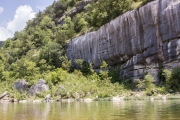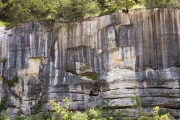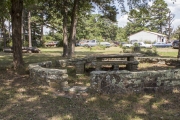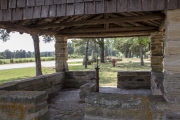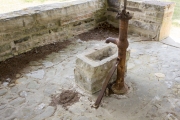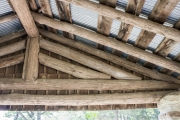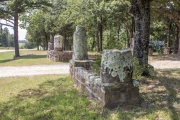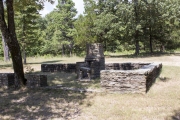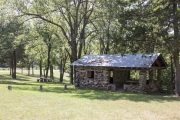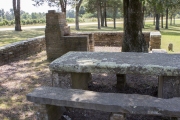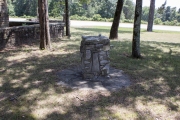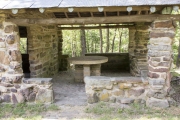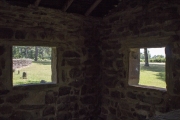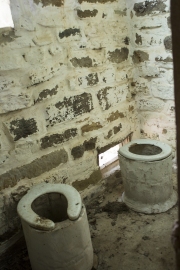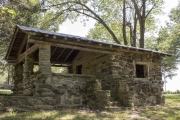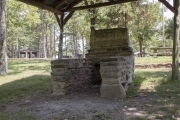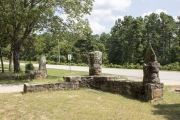Buffalo Point
Time-lapse video by Acadia Roher
By Acadia Roher, student, Master's of Public History at UA at Little Rock
Visited on: 8/3/2019
While the style of CCC park infrastructure is somewhat uniform across the state, the use of local materials makes each place unique. Nowhere is this more evident than at Buffalo Point, which started out as a state park in the 1940s and is now part of the Buffalo National River. The cabins there are, of course, built with native stone and timber, but they also include original furniture built by the CCC. Visitors sleep in beds built by the men and recline on benches designed with cane harvested from the river’s edge. The spirit of the workers is palpable here, in part due to the unmistakable marks of hand tools on overhead beams and chair legs, but also because many of the workers’ descendants have livelihoods that still revolve around the river and the park.
Talk to anybody in the area and they’ll start rattling off the names of guys they knew who worked in the CCC at Buffalo Point, quarrying stone and milling oak boards for the cabins, pavilion, lodge, retaining walls, and trails. Some of the workers came from local families, while others fell in love with the river or a local girl. Locals described joining the men for roller skating in the giant pavilion and attending dances at the CCC camp recreation hall off Highway 14.
Anyone who has floated the lower Buffalo River in recent years knows Wild Bill’s Outfitter, one of the only places for miles to fuel up, fill your cooler with ice, and book canoes. The place looks like it’s been there forever, but before Wild Bill was Joe Barnes, whose outfitter shop operated for decades out of the now-abandoned building across the road. Joe came to the area as a CCC worker and never left. His children and grandchildren are still in the area.
Another notable CCC worker was Vermont native, Stanley Lanphear, who told tall tales to park visitors for years as the character “Old Riverman.” He never married but was a fixture in the area until his death in 1990.
The legacy of the CCC on the Buffalo River area is visible in some very tangible ways that extend beyond the park. The skills the men learned in the camps served them for life. One local man described how his brother made a career out of carpentry after learning woodworking skills during the construction of Buffalo Point’s various amenities. In the 1970s, the Johnson administration developed a federal program called Green Thumb, which put impoverished seniors back to work. Some of the men in the area who had learned stone masonry as CCC workers in the 1930s, like Stanley Lanphear, were hired to build a city park half an hour away in Big Flat, which still welcomes visitors to enjoy dozens of expertly-crafted stone pavilions, picnic tables, and outdoor stoves.
One of the trails at Buffalo Point takes visitors to the quarry where the fossil-filled limestone used in park structures was mined. It wasn’t until I got a chance to look at the way the rock was removed from the mountainside that I started noticing the telltale drill and dynamite marks on rocks embedded in chimneys and walls around the park. Even a small amount of investigation can be so powerful, revealing clues hidden in plain sight. A drill hole in the rock step leading up to the cabin door where I stayed was suddenly very obvious. Of course, my seven-year-old nephew noticed it long before I did.
Buffalo Point was one of the last CCC projects begun before World War II. The planned infrastructure for the park was not finished before the CCC was dissolved in preparation for the United States to enter the war. Many of the men were re-routed into the military. Several of the structures were completed later by park employees picking up where the men left off.
If you'd like to visit Buffalo River National Park, visit the National Park Service site to learn more. You can book a CCC-built cabin here.

